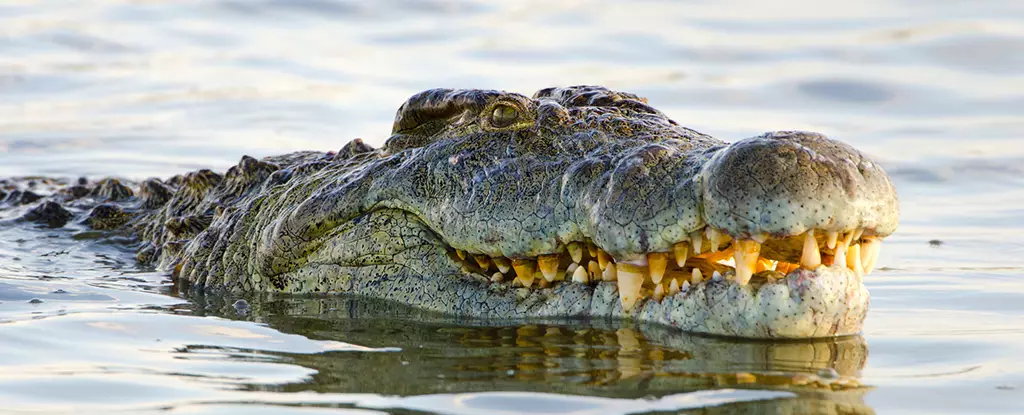Crocodiles, often perceived as one of nature’s fiercest predators, possess a distinctive feature that captures the imagination: their signature “smile.” However, this charming aspect masks a complex and fascinating biological process that has intrigued researchers for years. Recent studies conducted by scientists at the University of Geneva have unveiled the intricate mechanisms behind the formation of these reptiles’ unique head scales, challenging previous theories and expanding our understanding of embryonic development in crocodiles.
Crocodiles possess a unique morphology that sets them apart from other reptiles, particularly in their head scales. Unlike the hair found in mammals or feathers in birds, the scales on a crocodile’s head are formed through a distinct biological process. Previous research led by Michel Milinkovitch, a prominent biological scientist, suggested that you can think of these head scales as being sculpted by a mechanical process, similar to how various skin folds are formed. This concept diverged from traditional thinking which linked scale development to genetic patterns, known as Turing patterns.
Delving deeper into this subject, researchers came to understand that the irregular shapes of crocodile head scales stem from the embryonic skin’s response to mechanical forces. This raises the question: how do these embryonic structures precisely form? Understanding the hidden intricacies involves examining what transpires inside the crocodile egg during development.
Up until now, a common theory held that tensile stress—forces that stretch and elongate skin—was responsible for creating the wrinkles and folds in crocodile heads. However, evolving research points towards a remarkable shift in understanding. A new study indicates that compressive mechanical instabilities are at play, implying that these scales form as the skin is compressed rather than pulled taut.
The development begins with a smooth embryonic jawline, which undergoes gradual modifications. As the crocodile matures in the egg, these initial smooth contours are replaced by wrinkles that lead to the formation of distinct polygonal scales. Larger scales dominate the upper jaw, while the lower jaw exhibits a unique arrangement of smaller polygons. Through experimental manipulation, scientists injected eggs with epidermal growth factor (EGF), enhancing the tissue’s stiffness and growth rate. This led to an exaggerated version of the usual physiological process.
The findings from these experiments indicate that the normal head-scale patterning in Nile crocodiles (Crocodylus niloticus) results from skin growth surpassing that of the underlying bone structure. This mismatch in growth rates creates a fascinating array of folds and scales, reminiscent of the loose skin observed in certain dog breeds, emphasizing the importance of rate and mechanical forces during developmental biology.
The “labyrinthine” skin folds observed in EGF-treated embryos provide substantial insights into the evolution of different head-scale patterns across various crocodilian species. This indicates that evolutionary pressures may contribute to the diversity in scale formation, with each species adapting over time based on specific environmental and developmental mechanisms.
The mystery behind the crocodile’s smile goes beyond mere aesthetics. The complex interplay of mechanical forces and biological growth processes illustrates a captivating aspect of evolution and adaptation in this ancient reptile. As our comprehension of these mechanisms deepens, we gain a greater appreciation for the intricacies of nature’s design, challenging preconceived notions about how organisms develop their unique traits. Indeed, the world of embryology is as complex as it is beautiful, revealing how even a creature as formidable as the crocodile carries with it the beautiful intricacies of life’s grand design.



Leave a Reply